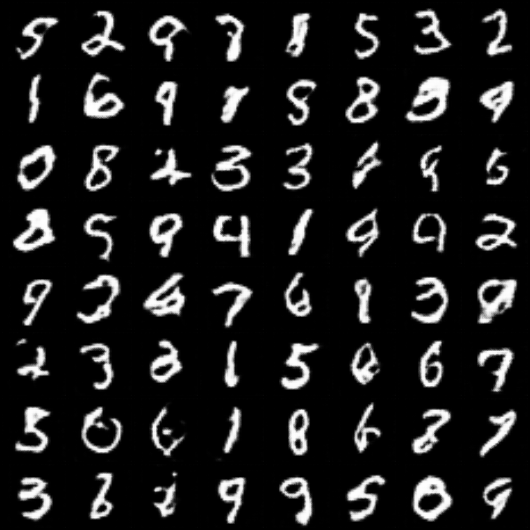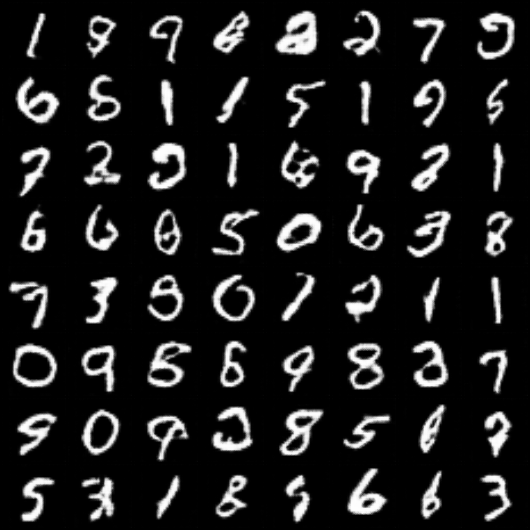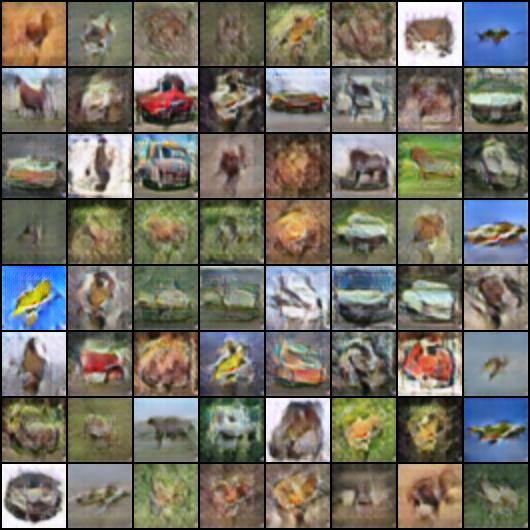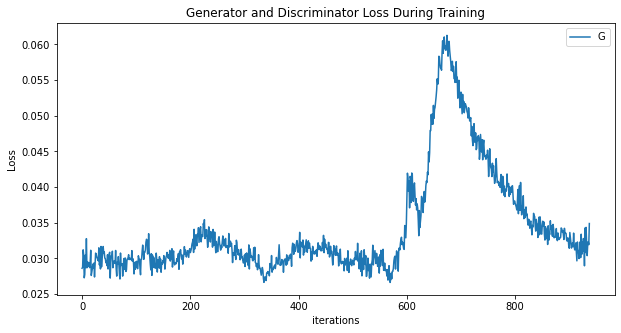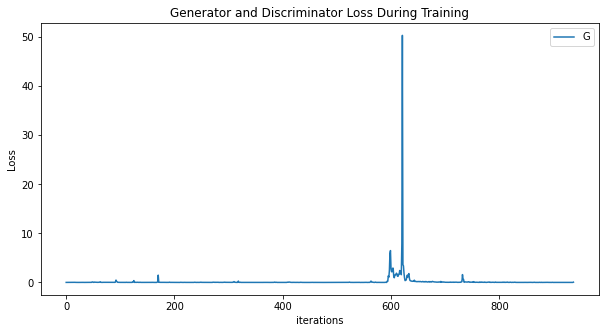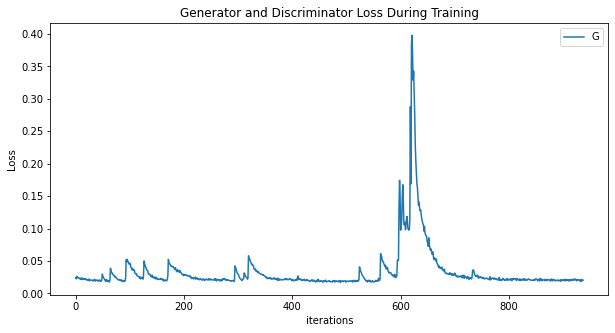- Title: Autoencoding beyond pixels using a learned similarity metric
- Authors: Anders Boesen Lindbo Larsen,Søren Kaae Sønderby,Hugo Larochelle,Ole Winther
- Link: https://arxiv.org/pdf/1512.09300.pdf
- Tags: Neural Network, Generative Networks, GANs
- Year: 2016
$ python3 main.py -
The paper combine VAEs and GANs into an unsupervised generative model that simultaneously learns to encode, generate and compare dataset samples.
-
It shows that generative models trained with learned similarity measures produce better image samples than models trained with element-wise error measures.
-
It demonstrate that unsupervised training results in a latent image representation with disentangled factors of variation (Bengio et al., 2013). This is illustrated in experiments on a dataset of face images labelled with visual attribute vectors, where it is shown that simple arithmetic applied in the learned latent space produces images that reflect changes in these attributes.
A VAE consists of two networks that encode a data samplex to a latent representation z and decode the latent representation back to data space, respectively:
The VAE regularizes the encoder by imposing a prior over the latent distribution p(z). Typically z ∼ N (0, I) is chosen. The VAE loss is minus the sum of the expected log likelihood (the reconstruction error) and a prior regularization term:
A GAN consists of two networks: the generator network Gen(z) maps latents z to data space while the discriminator network assigns probability y = Dis(x) ∈ [0, 1] that x is an actual training sample and probability 1 − y that x is generated by our model through x = Gen(z) with z ∼ p(z). The GAN objective is to find the binary classifier that gives the best possible discrimination between true and generated data and simultaneously encouraging Gen to fit the true data distribution. We thus aim to maximize/minimize the binary cross entropy with respect to Dis / Gen with x being a training sample and z ∼ p(z).
Specifically, since element-wise reconstruction errors are not adequate for images and other signals with invariances, we propose replacing the VAE reconstruction (expected log likelihood) error term with a reconstruction error expressed in the GAN discriminator.. To achieve this,let Disl(x) denote the hidden representation of the lth layer of the discriminator. We introduce a Gaussian observation model for Disl(x) with mean Disl(x˜) and identity covariance.We train our combined model with the triple criterion:
Notably, we optimize the VAE wrt Lgan which we regard as a style error in addition to the reconstruction error which can be interpreted as a content error using the terminology from Gatys et al. (2015). Moreover, since both Dec and Gen map from z to x, we share the parameters between the two.
For all our experiments, we use convolutional architectures and use backward convolution (aka.fractional striding) with stride 2 to upscale images in Dec. Backward convolution is achieved by flipping the convolution direction such that striding causes upsampling. Our models are trained with RMSProp using a learning rate of 0.0003 and a batch size of 64.
----------------------------------------------------------------
Layer (type) Output Shape Param #
================================================================
Conv2d-1 [64, 64, 32, 32] 1,664
BatchNorm2d-2 [64, 64, 32, 32] 128
LeakyReLU-3 [64, 64, 32, 32] 0
Conv2d-4 [64, 128, 16, 16] 204,928
BatchNorm2d-5 [64, 128, 16, 16] 256
LeakyReLU-6 [64, 128, 16, 16] 0
Conv2d-7 [64, 256, 8, 8] 819,456
BatchNorm2d-8 [64, 256, 8, 8] 512
LeakyReLU-9 [64, 256, 8, 8] 0
Linear-10 [64, 2048] 33,556,480
BatchNorm1d-11 [64, 2048] 4,096
LeakyReLU-12 [64, 2048] 0
Linear-13 [64, 128] 262,272
Linear-14 [64, 128] 262,272
================================================================
Total params: 35,112,064
Trainable params: 35,112,064
Non-trainable params: 0
----------------------------------------------------------------
Input size (MB): 1.00
Forward/backward pass size (MB): 171.12
Params size (MB): 133.94
Estimated Total Size (MB): 306.07
----------------------------------------------------------------
----------------------------------------------------------------
Layer (type) Output Shape Param #
================================================================
Conv2d-1 [64, 32, 64, 64] 832
LeakyReLU-2 [64, 32, 64, 64] 0
Conv2d-3 [64, 128, 32, 32] 102,528
BatchNorm2d-4 [64, 128, 32, 32] 256
LeakyReLU-5 [64, 128, 32, 32] 0
Conv2d-6 [64, 256, 16, 16] 819,456
BatchNorm2d-7 [64, 256, 16, 16] 512
LeakyReLU-8 [64, 256, 16, 16] 0
Conv2d-9 [64, 256, 8, 8] 1,638,656
BatchNorm2d-10 [64, 256, 8, 8] 512
LeakyReLU-11 [64, 256, 8, 8] 0
Linear-12 [64, 512] 8,389,120
BatchNorm1d-13 [64, 512] 1,024
LeakyReLU-14 [64, 512] 0
Linear-15 [64, 1] 513
Sigmoid-16 [64, 1] 0
================================================================
Total params: 10,953,409
Trainable params: 10,953,409
Non-trainable params: 0
----------------------------------------------------------------
Input size (MB): 1.00
Forward/backward pass size (MB): 440.75
Params size (MB): 41.78
Estimated Total Size (MB): 483.53
----------------------------------------------------------------
----------------------------------------------------------------
Layer (type) Output Shape Param #
================================================================
Linear-16 [64, 16384] 2,113,536
BatchNorm1d-17 [64, 16384] 32,768
LeakyReLU-18 [64, 16384] 0
ConvTranspose2d-19 [64, 256, 16, 16] 2,359,552
BatchNorm2d-20 [64, 256, 16, 16] 512
LeakyReLU-21 [64, 256, 16, 16] 0
ConvTranspose2d-22 [64, 128, 32, 32] 1,179,776
BatchNorm2d-23 [64, 128, 32, 32] 256
LeakyReLU-24 [64, 128, 32, 32] 0
ConvTranspose2d-25 [64, 32, 64, 64] 147,488
BatchNorm2d-26 [64, 32, 64, 64] 64
LeakyReLU-27 [64, 32, 64, 64] 0
ConvTranspose2d-28 [64, 1, 64, 64] 801
Tanh-29 [64, 1, 64, 64] 0







